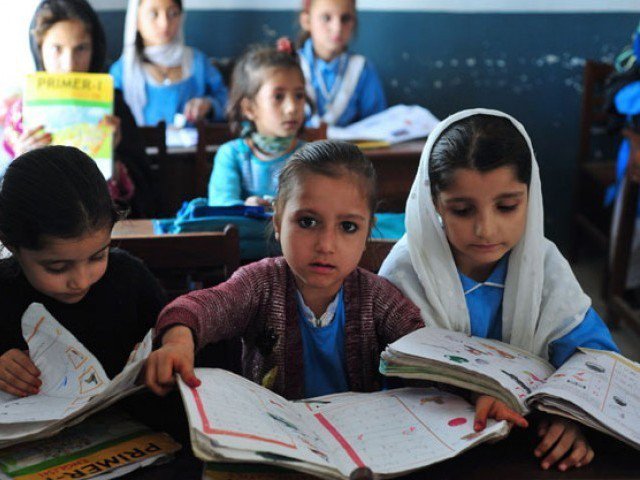
The government might have taken an initiative to improve infrastructure of schools following prime minister’s announcement, the latest figures reveal that the capital still struggles to overcome dropout rates in its rural areas.
Prime Minister Nawaz Sharif last week inaugurated a revamped school in Panjgran which is the first phase of 21 schools being physically upgraded. Infrastructures of as many as 401 institutions will be improved in the long run.
The move might help improve the infrastructure of institutes however, the measures taken to improve education quality have yet to yield any result.
The latest report by Annual Status of Education Report 2015 portrays different picture in capital with alarming figures revealing an increase in the number of dropout of students compared to previous year.
According to the report, enrolment in grade one in 2014 was said to be around 96.7 per cent which has come down to 92.6 per cent in 2015.
Similarly, retention figures in 2015 have also witnessed a nosedive in grade 10 as it was 73.7 per cent in 2014 but has plummeted to 47.1 per cent in 2015. The dropout percentage suggests that proportion of out-of-school children has increased by one per cent as according to report around 98 per cent of all school-aged children were enrolled in these areas.
The survey was conducted in rural areas of Islamabad covering about 300 households in 15 villages of territory from 653 children (49 per cent boys, 51 percent girls) aged 3-16.

Multi-grade teaching is higher in private schools as 17 per cent surveyed government institutes and 50 per cent of private had grade two sitting with other classes. Likewise, 12 per cent of surveyed government and 50 per cent of private schools had grade eight sitting with other classes. This trend was zero in second grade and same in grade eight in 2014 survey in government sector.
Abseentism
Children abseentism was found 28 per cent higher in government schools, which was 10 per cent in private institutes. Interestingly, overall student attendance in government sector stood at 72 per cent whereas it was 90 per cent in private institutes.
The teachers attendance was way higher in public sector compared to private sector as about nine per cent teachers in government and 67 per cent were absent in private schools. Overall teacher attendance in surveyed government schools stood at 91 per cent whereas it was 33 per cent in private ones.
The dropout percentage suggests that proportion of out-of-school children has increased by one per cent as according to the report around 98 per cent of all school-aged children were enrolled in these areas.
Paid tuition
The culture of paid tuition too has witnessed surge compared to last year. In 2014, 5.4 per cent grade one students in private sector were attending paid tuition while in 2015 it has jumped to 21 per cent in the same grade. Similarly, the paid tuition in government schools also saw upsurge trend in 2015 as it is 33 per cent in the same grade which was 18 per cent in last year. The number increases to 37.5 per cent in grade 10 for the ongoing year which was earlier only seven per cent for private sector.
The ups
Some good outcomes have also been reported in the analysis with this year 67 per cent of class three students could not read story in Urdu in comparison to 85 per cent in the previous year. Similarly, 15 per cent of grade one children cannot read letters in Urdu compared to 30 per cent in 2014.
Likewise, English learning levels also show improvement, with 14 per cent children unable to read grade two level sentences, compared with 58 per cent in 2014.
Similarly, arithmetic learning levels also show positive results figures as around 17% children of grade five could not do two digit division compared to 60% in 2014.
Published in The Express Tribune, December 20th, 2015.


































1713853507-0/MalalaHilary-(2)1713853507-0-270x192.webp)








COMMENTS
Comments are moderated and generally will be posted if they are on-topic and not abusive.
For more information, please see our Comments FAQ